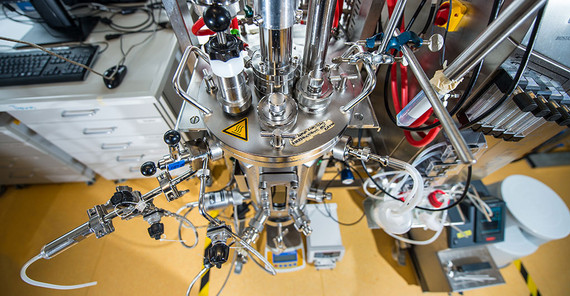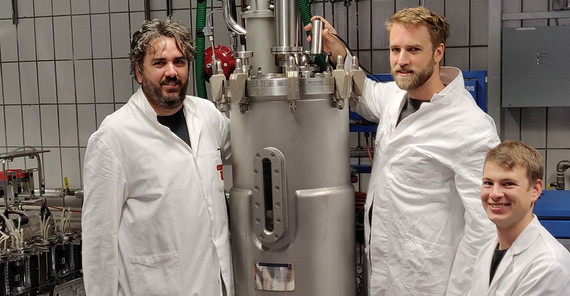Bacteria produce bioplastic
At innoFSPEC, scientists from various disciplines and institutions are working on the production of biodegradable plastic with good product properties. There is already plastic tableware that rots within two to three months, dissolves completely and is compostable. During their search for useful raw materials to develop new substances, the researchers wanted to avoid at all costs foods such as corn or sugar cane, which are repeatedly being discussed - and came across waste fats. They found them, for example, in agriculture, the catering industry, and in the food waste processing industry. Waste products are resources that can be turned into high-quality materials. To trigger the necessary processes, the researchers use oxyhydrogen bacteria that are found in the soil and water. To make them grow, the bacteria are placed in mineral salt solutions and fed with nitrogen, oxygen, phosphorus, and carbon. This creates polyhydroxyalkanoate, or PHA for short. The aim is to offer an affordable alternative to the relatively inexpensive conventional plastic, i.e. to produce bioplastic as economically as possible.
The fat required for the experiments comes from a small company in Adlershof, which can’t use the waste product in any other way. The innoFSPEC researchers are involved in monitoring the process. They are specialized in sensor-based inline measurements. “When it comes to cultivation, we want to know what is happening during the whole process,” says Schiewe. The cells want to live under conditions that are “acceptable” to them. That means they need oxygen and nitrogen and the right pH value. To be able to check these parameters at any time, they should ideally be measured digitally in the process with the analyzer. This enables the researchers to track the process in real time.
A completely new measuring technology
There is already a wide range of commercial methods available. The innoFSPEC team invested a lot of work and time though to develop their own technology for these measurements, the so-called photon density wave spectroscopy (PDW). “The technology is commercially available through a spin-off of the University of Potsdam, PDW Analytics GmbH, and is globally unique,” says Schiewe. Due to the fat droplets, a turbid liquid is created In the course of the cultivation process and things are “chaotic”. “Compared to most other technologies, the strength of our method is that it works even in highly turbid processes,” he says. This method developed by the researchers at innoFSPEC does not only generate information in real time but also at very high concentrations. “We actually wanted to find out how the fat dissolves in the reactor. In the course of the investigations, however, we saw that something much more interesting could be measured. One of the big advantages of our technology is its ability to separate two effects: light scattering and light absorption,” Schiewe says. This enabled them to observe that the absorption reached its maximum earlier in the course of the process. It turns out that the scattering is linked to the growth of the biomass because the cell stem is growing until nitrogen is no longer available. If you don’t add new nitrogen, the bacteria shift their focus entirely to the enrichment of the bioplastic inside the cell. With their technology, the researchers can follow the formation of plastic via the scattered light signal and thus are able for the first time to determine the right time for the harvest in real time. Since the researchers monitor the entire process with this measurement technology, they also act as process engineers and pay attention to the cost efficiency factor of their work. They only use energy, for instance, when it is really needed. This makes plastic production not only environmentally friendly, but it also saves resources.
The Researcher
Thomas Schiewe studied biotechnology at RWTH Aachen University. He is currently writing his doctoral thesis at Technische Universität Berlin and is also research associate at innoFSPEC.
Mail: tschieweuuni-potsdampde
innoFSPEC is a research and innovation center doing multidisciplinary research in the field of optical fiber spectroscopy and sensing. It was founded as a joint center of the Leibniz Institute of Astrophysics Potsdam (AIP) and the working group Physical Chemistry of the University of Potsdam (UP).
This text was published in the university magazine Portal Wissen - One 2020 „Energy“.
BU:
Bioreactor for cultivating microorganisms in the innoFSPEC lab
Optical fibers used as fiber optic cables for PDW spectroscopy
Thomas Schiewe (middle) with his colleagues of the bioprocess engineering team of TU Berlin who develop and research the bioplastic process


